Friday’s regular ImPort Stanley post is taking this week off. It’s Remembrance Day. I’ve just discovered that one of my late relatives is part of a legendary military tragedy that took the lives of 27 men.
My Mother’s first cousin, Alfred (Freddie), was a crewman on board a US Navy plane that vanished without a trace in 1945. It’s remembered as the Lost Patrol.
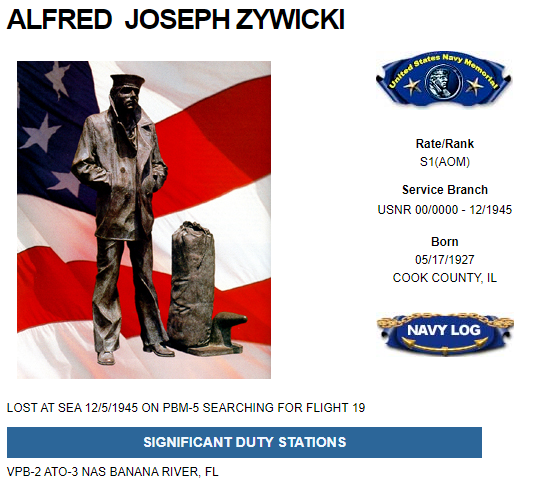
A generation earlier, the Zywickis emigrated from Poland. Freddie’s Dad, John, chose to settle in the US, while my Grandfather Stanley picked Canada. Born in 1927, Freddie was the eldest of the cousins in my Mom’s generation.
Freddie and a dozen other US Navy men on board PBM Mariner Bureau #59225 (PBM 5) had been dispatched from the Fort Lauderdale Naval Station, along with another plane, to look for Flight 19. Flight 19 was the collective name for a squadron of five TBM Avenger Training Bombers carrying 14 men between them. Seven planes went out that day. Six didn’t come back. This was a catastrophic loss for the US Navy and gave fuel to the legend of The Bermuda Triangle.
A Compounded Disaster
Flight 19 had set out in the afternoon of December 5, 1945, about 7 months after the end of WWII, from Florida’s Patrick Airforce Base. They called it routine training but it was dangerous. All the men were experienced and knew the risks. Almost two hours into the exercises that included dropping torpedoes, the lead instructor. LT Charles C. Taylor, radioed another pilot to say he wasn’t sure where they were. They had hit stormy weather and when the sky cleared, LT Taylor became disoriented. A crew member reported his compasses were broken. The flight that day used deliberately bare bones planes. They had no clocks on board and limited instruments, meant to test the trainees’ sense of the passage of time and rely on sight and instinct instead of gauges.
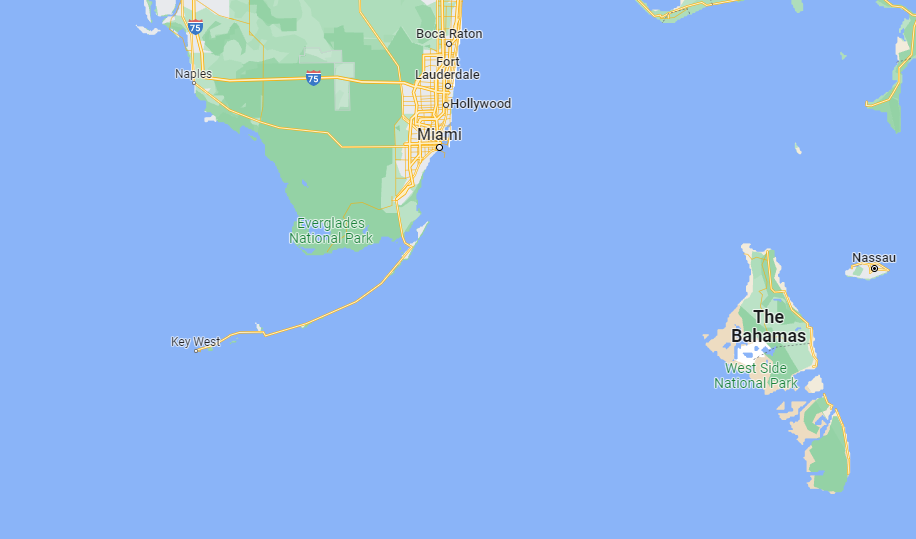
LT Taylor decided they were over the Florida Keys and that they should proceed northeast to return to base. The military investigation later found he was mistaken. They had been over the Bahamas, east of the Keys. Because of this error, Taylor accidentally sent the planes out over the open Atlantic Ocean instead of back toward the base. He also refused to change the radio frequency to an emergency channel when it was suggested. They flew for two more hours before vanishing. Had they been over the Keys, they would have returned to the base in 20 minutes.
Meantime, PBM 5, with Seaman 1st Class, Alfred J. Zywicki and his colleagues, was sent up to search for the missing planes. They hoped to locate the lost bombers and guide them home. PBM 5 was never heard from again. Thirteen minutes after take-off, the tanker SS Gaines Mills reported an explosion and flames in the air where PBM 5 could have been, considering the length of time it was away. The ship advanced through an oil slick on the water to search for survivors. They found no one.
The PBM Mariner had a reputation of being notoriously accident-prone. The airmen nicknamed it the “flying gas tank” for its tendency to explode.
HistoricMysteries.com
The next day, the Navy sent more than 300 planes and boats out to search 250,000 square miles. They came up empty.
A Flight of Fancy
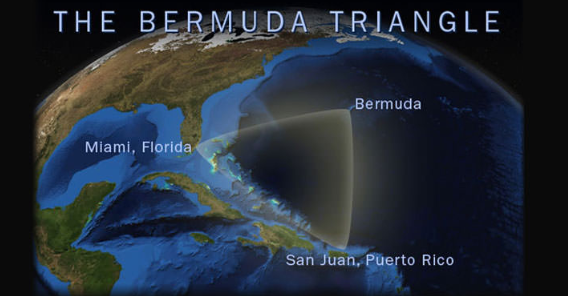
The Bermuda Triangle idea grew after decades of mysterious and unexplained disappearances of ships and planes with souls on board. Many studies have been conducted. People sail and fly over the area every day and nothing happens. And statistics show the triangle doesn’t swallow any more vessels than the rest of the Atlantic. There’s no universal agreement on where the triangle begins and ends. It doesn’t appear on any map. A 2013 study by the World Wildlife Fund found it doesn’t even make the top 10 of the world’s most dangerous bodies of water for shipping.
But people love a good mystery so the story persists to this day. And the loss of more than two dozen US naval men at once had made headlines around the world.
The Triangle includes one of the few places on earth where true north and magnetic north line up. That could explain some confusion for airmen and seamen. Also, the majority of Atlantic tropical storms and hurricanes pass through the region. The Gulf Stream goes through there and causes sudden changes in weather. All these factors are possibilities. But no one knows for sure.
The Investigation Concludes
And there’s simple human error. LT Taylor had recently transferred to Florida and didn’t know the geography well. The Navy didn’t blame him, but his Mother convinced the Navy to take his name off the official report. She argued that the Navy couldn’t be sure what happened without evidence like bodies or wrecked planes. The disaster report concludes with “cause unknown”.
“All planes close up tight. We’ll have to ditch unless landfall. When the first plane drops below 10 gallons, we all go down together.”
One of the last radio transmissions of Flight leader Lt. Charles C. Taylor
Legacy of the Lost Patrol
Over the years, many salvagers have claimed to find one of the missing Avengers. But none of the planes’ numbers matched The Lost Patrol or Flight 19.
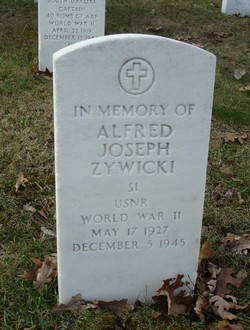
Just five years ago, Patrick Air Force Base erected a granite and bronze memorial to the men of the rescue plane that never came home. (Photo at top) They included my first cousin once removed, Alfred J. Zywicki. The 1999 US Library of Congress book, I’ll Be Home for Christmas, mentions Freddie. In it, one of Freddie’s naval buddies tells of how he and Freddie switched crews shortly before the incident. The writer says he still thinks of Freddie every year at Christmastime.
Thanks to my first cousin Shelley for alerting me to this important piece of our family’s history. And to my mom’s cousin Eugene, the youngest of the cousins, for sending some clarifying info.

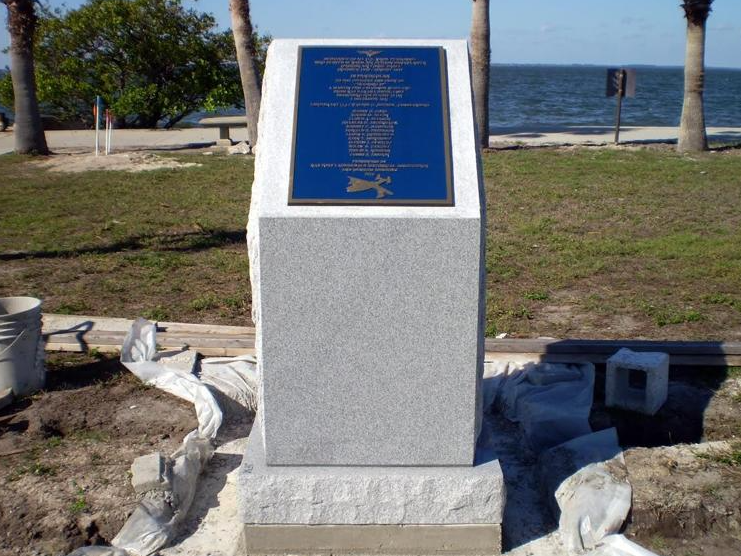
I recently saw a show on this very topic on on one of those mystery shows.
This was simply amazing. Putting oneself in his shoes – eventually in bronze effigy – is an astoundingly personal way to view the tragedies and tolls of war. Imagine a plane being KNOWN for blowing up, and still taking off…how you manage to put that out of your mind, as an airman…
Thank you for sharing this story with us all. It’s a reminder that if each of us digs a little deeper, the history is nearer than we can imagine.
Fascinating. In the 1970s, the Bermuda Triangle was such a legend, but I did not know it’s no more dangerous or mysterious than any other spot in the ocean. Steven Spielberg made much of stories like this in Close Encounters of the Third Kind. Very cool that you have a family connection to it!